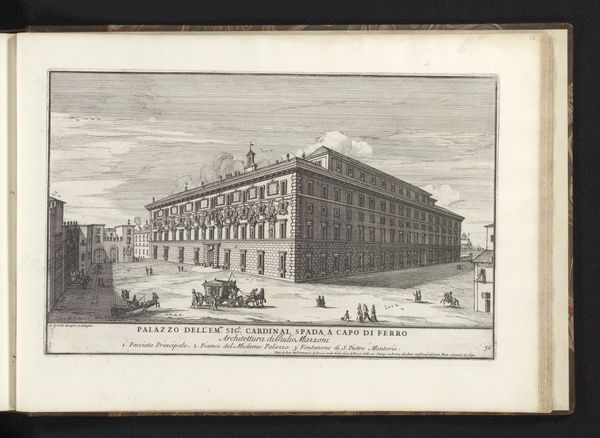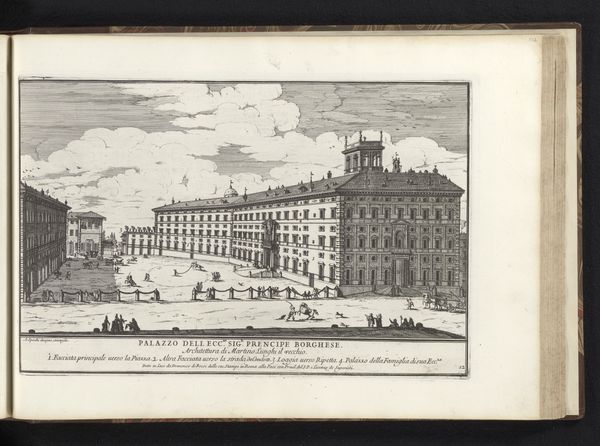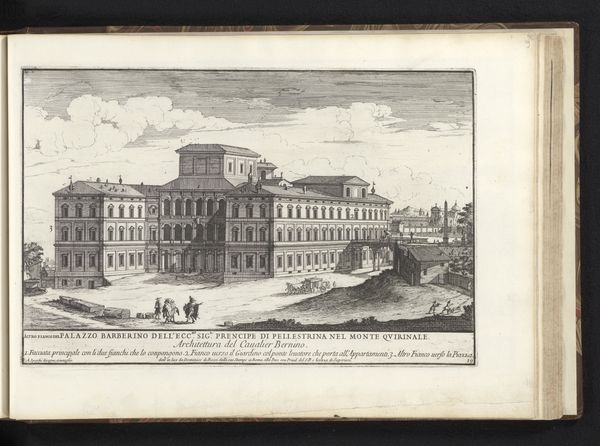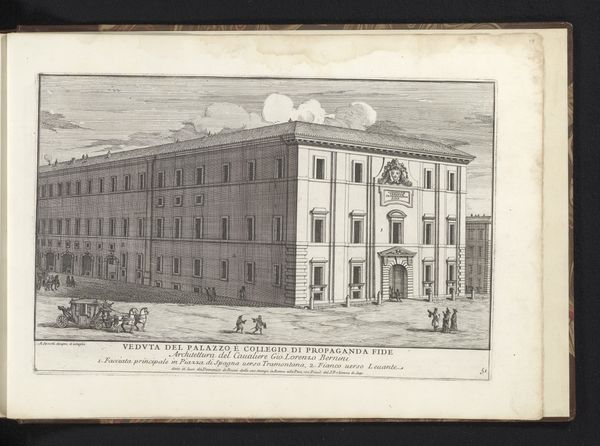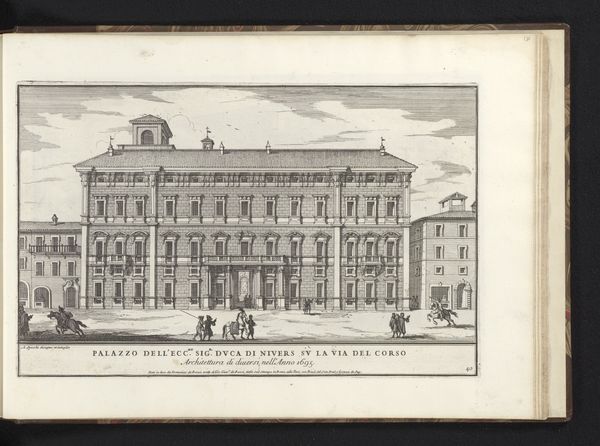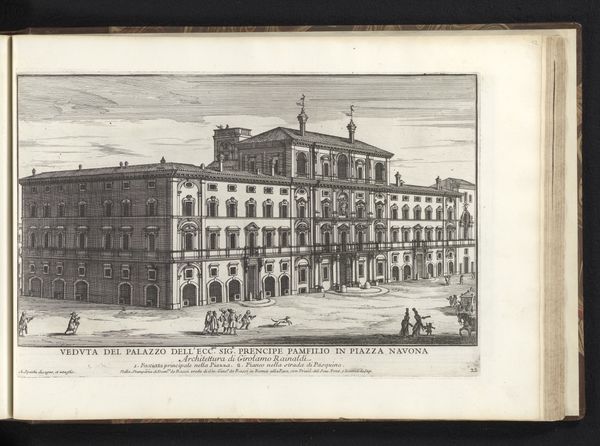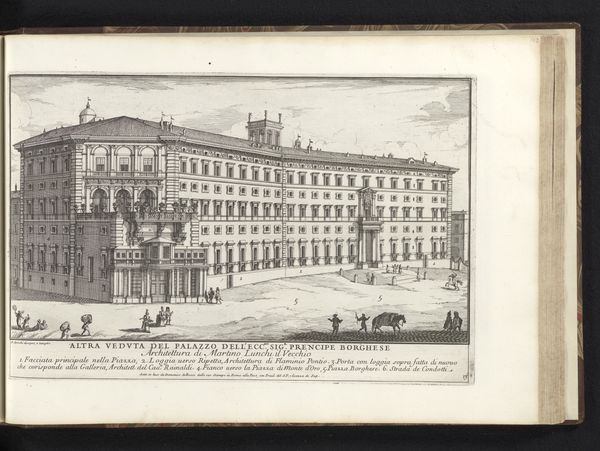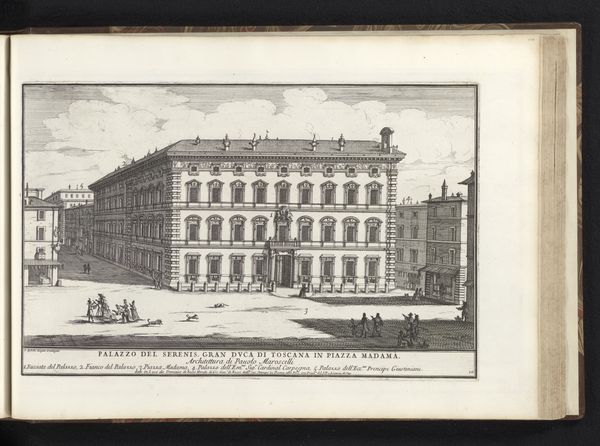
print, engraving, architecture
#
baroque
# print
#
line
#
cityscape
#
engraving
#
architecture
Dimensions: height 210 mm, width 326 mm
Copyright: Rijks Museum: Open Domain
Curator: What a precise and fascinating rendering. This engraving, created around 1699 by Alessandro Specchi, depicts the Collegio Romano in Rome. The artist's skill with line work is just stunning. Editor: The scale is astonishing. The sheer size of the Collegio dominates the scene, giving me an immediate sense of its institutional weight. It also highlights the social engineering inherent in Baroque architecture, dictating power through space. Curator: The symbolic architecture tells quite a story. Notice the cross atop the cupola, acting as a visual reminder of the religious foundation of this educational institution. These lines and geometric forms resonate with power. Editor: Exactly, but let's consider the means of creating this print, the very labor embedded in the production. It reflects the engraver's process, the tools and time used to transfer the building’s imposing presence onto paper, which will become widely distributed. Curator: Good point! These prints would have served a similar function as photographs or postcards. Notice the figures populating the foreground? Each grouping almost seems like an archetype for Roman society during the late Baroque. Look at that regal horse drawn coach there in the right corner! Editor: And that horse drawn carriage also shows that this isn’t just an isolated structure. Look how the figures lead our eyes into an urban landscape. I’m compelled by the interplay between the labor required for building and its accessibility as a commodity to the masses. It prompts the consumption and dissemination of images and ideas. Curator: Indeed. By analyzing these visual devices—the cross, the light, the composition— we get a glimpse of cultural beliefs of this historical context, beliefs that were embedded in education itself. Editor: Considering both its symbolic weight and the physical materiality in engraving gives the context more depth and historical scope for approaching its significance and power today. Curator: It's intriguing how one can derive so much information by exploring what appears to be, at first glance, a fairly straightforward depiction of a building. Editor: Precisely. It forces me to consider its journey, how many hands it went through, how many places it traveled. Materiality makes art part of everyday life, part of larger patterns of culture, labor, and consumption.
Comments
No comments
Be the first to comment and join the conversation on the ultimate creative platform.




